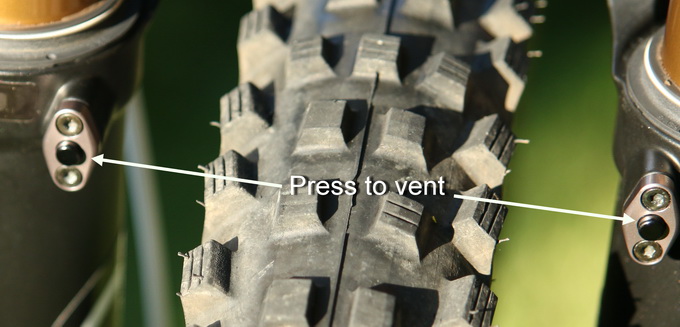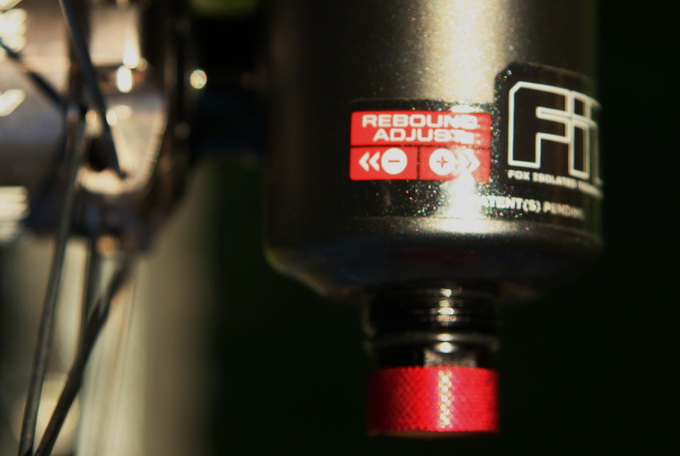I love when companies produce new components that weigh less and yet perform better than the previous renditions. For a long time the Fox 40 was on the heavy end of the downhill fork spectrum. But with the development of the new 40 Float RC2, Fox has dropped the weight significantly as well as improved sensitivity.
With a claimed weight of 5.98 pounds, Fox trimmed excess mass anywhere they could on the new 40. Most obvious are the redesigned lowers. Not only do they have an all-new shape, but this time they include a few extra details that help with both performance and practicality.
Taking an outside-in approach, and starting from up top, Fox decided to take rider feedback and tune out some of the chatter that was felt from the overly-stiff older 40, and tweak the design to add a bit of flex to take the edge off of some impacts.
Targeting the fork crowns, Fox redesigned the clamping area around the stanchion tubes. With an overall thinner profile, progressive thickness changes, and improvements to the clamp bolts, there’s less stress and improved grip on each of the Kashima stanchions.
Underneath the crowns there was a web of extra material on the previous 40. The new design gets rid of that mass, as Fox found that it wasn’t needed. They also added threaded bosses on the underside of the lower crown, for those of you who may consider running a mud guard.
A host of new changes were made to the fork lowers to reduce weight and improve the feel of the fork–not to stiffen it, but to improve compliance. The most obvious change is the arch of the lowers. Looking straight at the fork you will see the pronounced build of material around the crown. This ties both legs together securely. On the back side just below the seals, Fox has incorporated a set of pressure release buttons that, after a few runs, a rider can press to relive any build up of unwanted pressure under the fork seals.
The sliders on the new 40 have a slight taper that change the wall thickness which reinforces the lower bushing area, without making the lowers overly stiff. At the axle clamp, the fork has a new shape that uses less material. A rectangular, replaceable chip replaces last year’s stainless inserts. If a pinch bolt snaps, you can now swap out the chip. The caliper mounts are now post mounted for 203mm rotors.
Internally there have been some significant dampening changes. The real story is the new air spring / negative air spring. This advanced negative spring uses a titanium coil spring that progressively releases at 50 percent of the fork stroke, compared to other steel springs that release much sooner. While on the top end, the air spring uses a simple volume-adjustment piston assembly, just below the left side top cap.
By changing spacers and relocating the piston on the shaft, nine volume options are possible. With this feature you can make the fork feel more linear or progressive. With the piston up top, you get a linear feel (like that of the coil 40), and with the piston lower, you get increased sensitivity.
Further improvements to sensitivity come from the Kashima-coated internals of the RC2 damper, as well as the stanchion tubes. The lower friction seals from SKF remain and keep that source of stiction as low as possible. Due to the new air springs’ superior control for resisting bottoming out, there is no need for a hydraulic bottom out circuit. Other than that, the cartridge remains the same. The compression damping circuit had to be tweaked to be lighter due to the new spring system, which takes away much of the damper’s work in the end of the stroke.
For the first few rides with the Fox 40 Float I decided to leave the factory settings, and set the air pressure to 80 psi. Once I got in a few hours of riding, I then started to play with compression and rebound, even though the stock settings were so good I wasn’t sure if I wanted to change them!
The first thing I set up was the rebound. I wanted it so that on the rock gardens, the fork would come back as fast as it could without stinging my hands, and balancing that with jumping. However, I didn’t want the fork to come back so fast that it would push me back off the bike.
Compression was next, starting with the low speed and finishing with high speed. Honestly, I only ended up adding one extra click on both LSC and Rebound. I had no issue with the HSC, as it was fine as is. The result:
- 80 PSI
- 8 clicks HSC
- 9 clicks LSC
- 9 clicks Rebound
On the slopes I noticed a big change in the front end of the bike compared to the older version of the Fox 40. For one thing, that one pound less is a godsend. Older, heavier forks tend to slow the overall feel of a bike. The new, lighter lowers and air sprung stanchions allow for faster recycling of the fork. I noticed an immediate improvement on smaller ripples and rocks.
I think that Fox nailed it with the new 40 Float! Out of the box the fork feels great. I am very impressed with how well it worked on the rough gnar of the runs at Blue Mountain. This year the roots were more exposed than ever before, making for some bone-jarring runs.
When I did get around to tweaking the 40 and made those minor changes, I was loving the ride even more. Tossing the bike into berms and railing the corners on the new jumps between the berms on Showcase, I loved how fast the fork recovered long before the next opposing berm. So much fun, so much control!
Under hard braking or steep descents I didn’t notice much flex at all. I noticed that the fork didn’t feel as harsh as older versions, though. So using an educated guess, I would say the redesign did add a margin of flex to the fork.
I wouldn’t hesitate to recommend the new Fox 40 Float RC2 to any downhill rider. As of today, this is the best feeling, easiest to setup fork that I have ever ridden.
MSRP: $1,700
Thanks to Fox for providing the Float 40 for review!

































